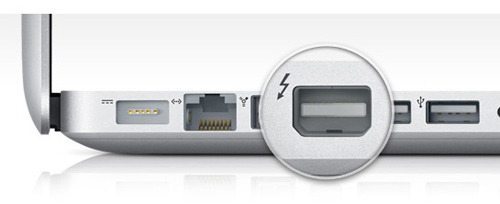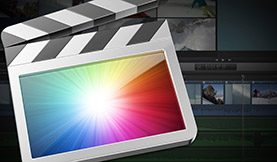Thunderbolt: Ahead of its time or wave of the future?
Why is Thunderbolt’s crazy fast data transfer a bit slow to catch on?
No doubt by now you’ve heard a bit about the new Thunderbolt technology by, a collaboration effort between Apple and Intel in 2011 for Apple’s new line of MacBook Pro laptops (as well as MacBook Air, Mac mini and iMac)—and though the hype and performance boost have editors drooling, a year later, adoption could still be a ways off for many users.
A quick summary of Thunderbolt from Intel:
- It’s ridiculously fast, simultaneous bi-directional, 10 Gbps transfers over a single cable
- Supports both data and display on a single cable, enabling greater simplicity, flexibility and new and exciting ways to use a PC
- Daisy Chaining devices without performance loss
Let’s just go back to the first point—a transfer speed of 10 Gbps is obviously a huge improvement over the 800 Mbps transfer rate of Firewire. To get a true sense of how fast this can be, you can view the video of Intel’s demo on transferring a full-length HD Video in 30 seconds. This speed transfer, with compatible RAID devices, holds immense promise for improved portability, efficiency and real-time updating.
It’s clear that Intel had video editors in mind while developing this new hardware. From Intel’s press release, “Working with HD media is one of the most demanding things people do with their PCs,” said Mooly Eden, general manager, PC Client Group, Intel. “With Thunderbolt technology, Intel has delivered innovative technology to help professionals and consumers work faster and more easily with their growing collection of media content, from music to HD movies. We’ve taken the vision of simple, fast transfer of content between PCs and devices, and made it a reality.”
Why so slow to adopt something so fast?
However, adopting a new technology does have some drawbacks as well. Thunderbolt’s technology currently relies on additional processing chips that must be on an Intel motherboard, and building in these additional hardware designs (instead of just a software upgrade) will take time for manufacturers to totally redesign and retool their products. And that sort of hump could certainly prevent both manufacturers and users from making the jump right away.
In addition to hardware design issues, there also may be a little politics at play. FCP Trainer and Blogger Larry Jordan talked to some hard drive retailers off-the-record, and discovered that several vendors were given market exclusivity for a year after Apple’s announcement of Thunderbolt, which happens to expire next month—just in time for NAB this year. Therefore, we could be seeing quite a few new Thunderbolt-ready devices this April.
And, there is the small matter of cost to keep Thunderbolt adoption at bay. Right now, a Thunderbolt workflow is expensive—a cable alone will run you $50. And if people are going to need to completely overhaul their hardware collection—that won’t come cheap, either. Of course, new technology is always expensive until alternatives drive cost down, so as more viable options enter the market (and more users discover they “need” this technology), we should see the cost of Thunderbolt go down.
Finally, as another blogger wonders, are we seeing a chicken and egg scenario where PC makers won’t adopt Thunderbolt ports until there are more products or are product makers waiting for PCs to add Thunderbolt ports?
Making the switch?
The number of currently available Thunderbolt products is limited, though more are projected to be available at the end of this year, so perhaps that will start to help improve the adoption and availability. It also looks like Apple certainly isn’t stopping at its computer lineup; they’ve recently submitted several patent requests (yes—it looks like Thunderbolt is headed for iOS devices).
Have you started using Thunderbolt already? Do you plan on upgrading soon? Leave your comments below and let us know if you are, or want to be, an early adopter and how this technology is affecting your work.





